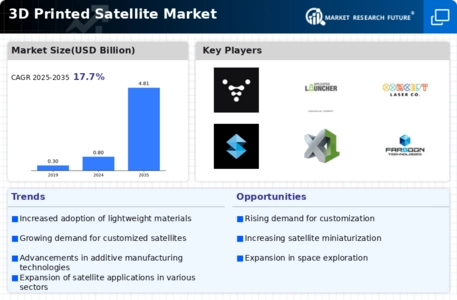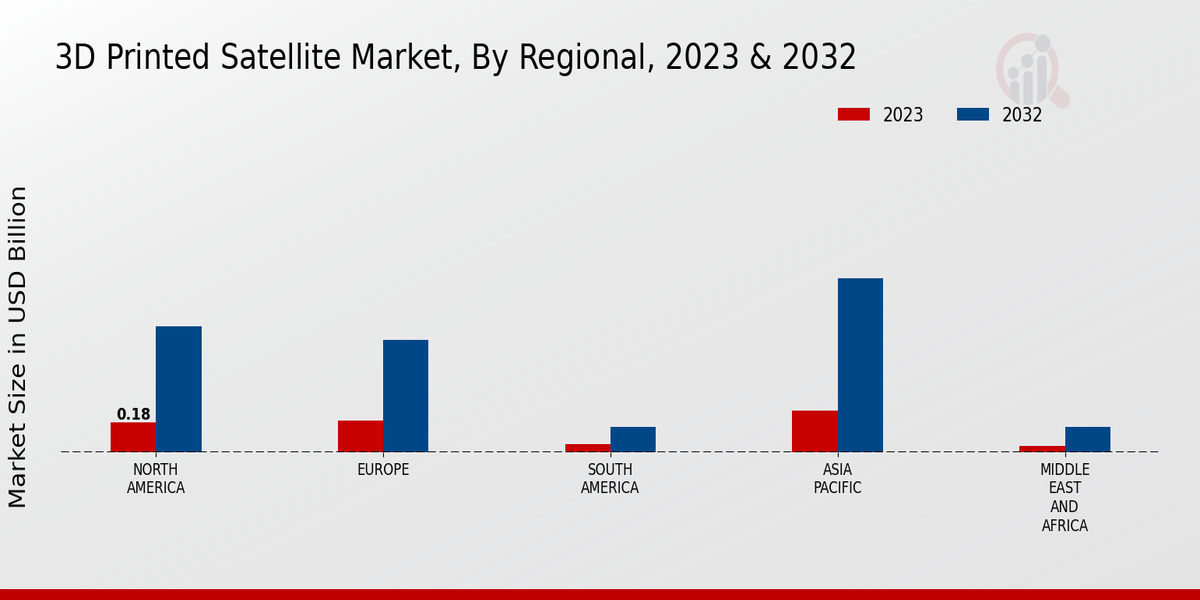Cost Efficiency of Production
The Global 3D Printed Satellite Market Industry is witnessing a transformative shift towards cost-effective production methods. Traditional satellite manufacturing often incurs exorbitant costs, with estimates suggesting that 3D printing can reduce production expenses by up to 50 percent. This reduction is primarily due to decreased material waste and shorter lead times. As a result, companies can allocate resources more efficiently, potentially increasing their market share. The market is projected to grow from 0.8 USD Billion in 2024 to 4.81 USD Billion by 2035, indicating a robust demand for cost-efficient satellite solutions.
Customization and Rapid Prototyping
Customization plays a pivotal role in the Global 3D Printed Satellite Market Industry, as 3D printing allows for the rapid prototyping of satellite components tailored to specific mission requirements. This adaptability enables manufacturers to iterate designs quickly, responding to evolving technological needs and customer demands. For instance, companies can produce unique satellite parts that enhance functionality without incurring significant delays. The ability to customize components not only accelerates development timelines but also fosters innovation, which is crucial for maintaining competitiveness in a market projected to grow at a CAGR of 17.72% from 2025 to 2035.
Increased Demand for Small Satellites
The Global 3D Printed Satellite Market Industry is experiencing a surge in demand for small satellites, driven by their versatility and cost-effectiveness. Small satellites, often referred to as CubeSats or nanosatellites, are increasingly utilized for various applications, including Earth observation, telecommunications, and scientific research. The ability to manufacture these satellites using 3D printing technology allows for rapid deployment and lower costs, making them attractive to both commercial and governmental entities. As the market for small satellites expands, the integration of 3D printing is likely to play a crucial role in meeting the growing demand.
Market Growth Projections (Charts Only)
Sustainability and Environmental Impact
Sustainability is increasingly becoming a focal point in the Global 3D Printed Satellite Market Industry. The shift towards 3D printing technology is associated with reduced environmental impact, as it minimizes material waste and energy consumption compared to traditional manufacturing methods. Furthermore, the use of recyclable materials in 3D printing aligns with global sustainability goals, appealing to environmentally conscious stakeholders. As the industry evolves, companies that prioritize sustainable practices may gain a competitive edge, particularly as regulatory frameworks become more stringent. This trend is likely to influence market dynamics significantly in the coming years.
Technological Advancements in Materials
Technological advancements in materials science are driving innovation within the Global 3D Printed Satellite Market Industry. The development of high-performance materials suitable for space applications enhances the reliability and durability of 3D printed satellites. These materials, which include lightweight composites and advanced polymers, enable the production of components that can withstand harsh space environments. As research institutions and companies collaborate to explore new materials, the market is expected to benefit from improved satellite performance and longevity. This evolution in material technology is likely to attract investment and foster growth in the sector.














